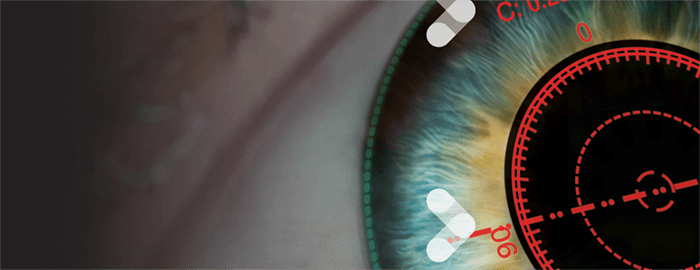
In traditional cataract surgery, refractive surprises result from refractive variables that have not been addressed (1)(2)(3); even the most sophisticated calculations and techniques can leave residual sources of refractive error (1). Enter Alcon® image-guided technology for intelligent surgical planning and empowered execution – with fewer unaddressed variables. Image-guided technology has already revolutionized many other fields, such as neurosurgery and orthopedic surgery. Now, the ORA SYSTEM™ with VerifEye™ Lynk – the world’s first and only image-guided cataract system – links the cataract procedure to the landmarks of the patient’s eye, and enhances refractive predictability and precision (1)(2)(3).
Over 1,000,000 completed CASES IN ANALYZOR™ DATABASE (4)(6)
- Continuous readings of total corneal astigmatism – cylinder and axis
- Real-time toric alignment: axis, residual cylinder
ORA intraoperative aberrometry provides real-time information that allows for a refined treatment plan, using both aphakic and pseudophakic refraction for IOL power calculation, axis of astigmatism and magnitude of astigmatism. Using the ORA SYSTEM™ with VerifEye™ Lynk (4) enhances the precision of IOL spherical power calculations: when using ORA SYSTEM™ the Mean Absolute Error was 0.5 D or lower in 85 percent of eyes, compared to 74 percent without using ORA (p=0.035) (1). Moreover, off-target post-operative outcomes are reduced by 53.8 percent with the ORA SYSTEM™; incidence of post-op cylinder >0.5D of target was only 10.8 percent (111 eyes) compared with an incidence of 23.4 percent (n=111 eyes) without the ORA SYSTEM™ (2). Not only does the ORA SYSTEM™ with VerifEye™ Lynk reduce postoperative refractive surprises through real-time refractive measurements in the OR, but it can reduce off-target outcomes in some of the toughest cataract refractive procedures. In post-refractive prior myopic patients (n=246 eyes from 215 patients) there was a 38.9 percent reduction in off-target (>0.5D) post-operative outcomes 30–90 days after the procedure (33.4 percent with ORA SYSTEM™ versus 54 percent without) (3). There is a tendency to underestimate the importance of refractive outcomes tracking and personal variables optimization in cataract refractive surgery. The brain of the ORA SYSTEM™, the AnalyzOR™ Web Based Data System, has now reached more than 1 million actual completed ORA SYSTEM™ cases (6). Since day one, using ORA SYSTEM™ AnalyzOR™ technology has been optimizing your recommendations based on an ever-expanding global database. Using the VERION™ 3.1 Image Guided System alongside the ORA SYSTEM™ with VerifEye™ Lynk helps enhance the toric alignment process and bring a new level of sphere and cylinder outcomes to cataract refractive procedures (1)(2)(3). Integrated VERION™ 3.1 provides registration and tracking, and a high-resolution digital overlay for guidance and marking. In doing so, it provides a new and improved way of looking at cataract surgery, helping to minimize potential sources of error during each step of the surgical process (5).
With Alcon® image-guided technology, the change has come to cataract surgery. Based on his own experience, Prof. Joaquim Murta, University of Coimbra, Coimbra, Portugal, concluded: “We have found preliminary evidence that the ORA intraoperative aberrometry can increase the accuracy of residual astigmatism prediction in a significant subset of eyes. In 52 percent of cases (26 of 50 eyes), ORA suggested different toric powers compared with a recently introduced toric IOL calculator that already accounts for posterior corneal astigmatism. In that subgroup, the prediction error for the same implanted toric power was significantly smaller using ORA intraoperative aberrometry (ORA = 0.44D ±0.40; Barrett = 0.73D ±0.45 ; p=0.028).”
www.alcon.com

References
- RJ Cionni and M Breen. “A study comparing preoperative power calculations versus outcomes using intraoperative aberrometry”. Paper presented at: ASCRS-ASOA Symposium and Congress; May 6-10, 2016; New Orleans, LA. MG Woodcock et al., “Intraoperative aberrometry versus standard preoperative biometry and a toric IOL calculator for bilateral toric IOL implantation with a femtosecond laser: one-month results”, J Cataract Refract Surg, 42, 817–825 (2016). PMID: 27373387. T Ianchulev et al., “Intraoperative refractive biometry for predicting intraocular lens power calculation after prior myopic refractive surgery”, Ophthalmology, 121, 56–60 (2014). PMID: 24183339. ORA™ user manual. VERION™ user manual. Alcon Data on File. ORA™ Procedures Report, May 2018
